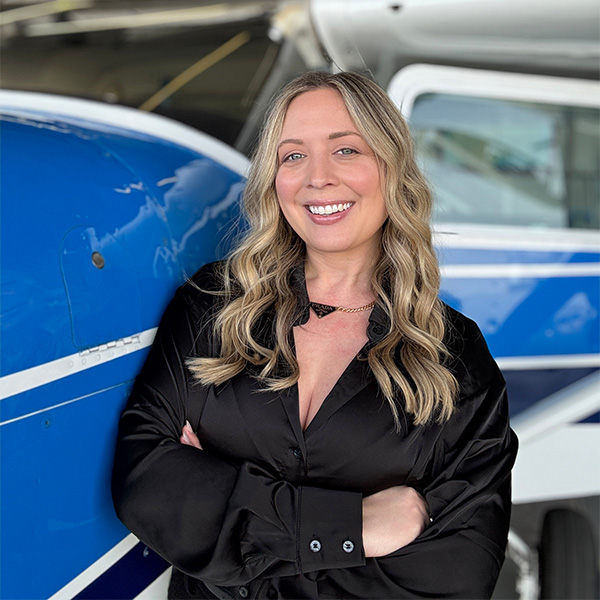'An unfathomable number'
Airlines raise pay, hire at unprecedented pace
Pilot career counselor, aviation expert witness, and aviation consultant Kit Darby and Chief Advisor and Executive Editor at Future and Active Pilot Advisors (FAPA) Tim Genc share their take on the unprecedented airline pilot pay hikes, hiring, and the consequences the current job market has on regional airlines and smaller operators.
Darby’s analysis of new pilot contracts implemented in recent years revealed a 546 percent jump in starting pay for regional airline pilots over the last 23 years from $16,000 per year in 2000 to $108,000 in 2023. In addition to higher pay, some regionals are offering signing and continuation bonuses as well as training contracts. These incentives have translated into more applicants, but according to Darby, these incentives are unlikely to fix the pilot shortage at the regional level.
“It’s certainly unprecedented,” Darby said in an interview. “We’ve had good times in the past, the majors hired 5,000 pilots, three times in history and the last one was the last half of 2021; so, in six months they matched the previous all-time record.”
“The next year,” Darby continued, “they hired over 13,000 pilots, which more than doubled the previous record, and it looks to be slightly more this year, with maybe 14,000 pilots hired. It’s an unfathomable number, the airlines are breaking training numbers every day.”
The major airlines are offering more than just great pay; enticing compensation and benefit packages, signing bonuses, retirement, and a better work-life balance. But as higher-time pilots are promoted to the majors, regional carriers are left clambering to find qualified captains.
Genc explained, “As the regionals are often a pilot’s first exposure to jet and [FAR] Part 121 time, a pilot is required to have 1,000 hours of Part 121 experience to upgrade to Captain. As there is a legal limit on the number of hours a pilot can fly in a day/month/year, this takes some time, at best, just over a year. As high-time regional pilots are being hired by the majors, that leaves a bunch of First Officers still building the required experience to, eventually, become Captains. This is why regionals are offering the most lucrative bonuses to Captain-qualified candidates. Hikes in FO pay are designed to entice more entry-level pilots, although the regionals currently have plenty of them. Hikes in pay/bonuses for Captains are meant to attract higher-time pilots.”
“The pilot unions at the major airlines have returned to pattern bargaining where each group attempts to improve on the collective bargaining agreement previously negotiated by its peers," Genc continued. “The pay rates in recent major airline agreements are approaching the buying power in the years prior to 2001.”
Contrastingly, Part 135 operations don’t have a mandatory retirement at age 65, or the 1,500-hour rule, leaving them with more options when looking to hire pilots.
“For the first time, Part 135 is competing with the regional airlines for the same group of minimum qualification pilots,” Genc said. “Pay increases/bonuses in the private and business aviation world are intended to attract all different types of pilots, including 65+ retired 121 folks.”
Although hiring numbers continue to climb, according to Boeing Co., 649,000 new pilots are needed to keep the global commercial fleet flying over the next 20 years, which adds up to over 32,000 pilots hired per year.
According to Darby, major airlines are short about 11,700 pilots, regional airlines are short 6,000 pilots, and the corporate aviation industry is short 3,750. Currently, regional airlines have about 500 aircraft grounded because there are not enough pilots to fly them.
Although major airlines are filling their vacancies with pilots from regional airlines, they aren’t coming out unscathed. Darby explained, “Regionals are every bit part of the major airline business plan because they feed in half of the flights and a quarter of the passengers. If a regional can’t meet their business plan, then the majors can’t either.”
To combat this, airlines and other industry stakeholders have proposed lowering the 1,500-hour rule and/or raising the mandatory retirement age of 65 to 67. Airline unions as well as the Biden administration have come out against raising the age limit.
“The 1,500-hour rule came about as a response to safety and experience concerns in the industry," Genc said. “The good part of this is it forces flight instructors to spend a little more time in the flight school, working with students, so there are actually experienced teachers molding the next generation of pilots.”
“The only negative,” Genc continued, “is there isn’t a quality control measure with those hours and, quite often, regional airline and Part 135 training departments are getting pilots with 1,250 hours of bad habits and no real experience. There has been a shift in focus from experience to hours.”
Darby argued against the 1,500-hour rule, echoing Genc’s point about quality control. The problem begins, according to Darby, at the flight school level, where attrition rates are exceptionally high. Darby believes that a pre-screening process to determine someone’s aptitude and attitude, like those used by U.S. military and European companies and flight schools like Skyborne Academy, will help to churn out more qualified candidates, making commercial flight training less of a pay-to-play process.




